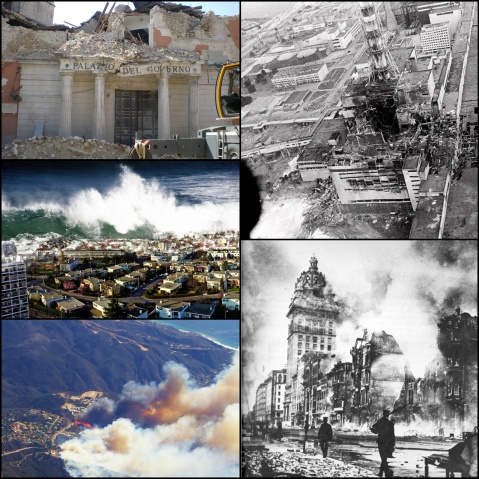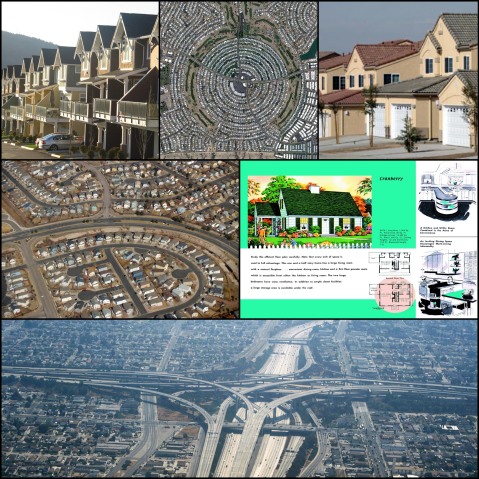Blog Exercise Nine
Picture one of this blog depicts the destruction of built infrastructure, most likely brought about by an earthquake. Earthquakes tend to have a wide spread impact and risk. Earthquakes involve movement of the earth and can happen on slip faults, subduction zones, dormant plate boundaries, and through continental collision. Earthquakes can be magnified by the build-up of silt and sediment which can cause liquefaction of the soil. Earthquakes happen most often at the Ring of Fire, near the Mediterranean, and in central Asia. The impact of an earthquake is determined by the depth of the earthquake, that is, how far down the location of its hypocenter is from its epicenter. The hypocenter is located underground, where the energy in the rock is released, and the epicenter is located directly above the hypocenter, on the earth’s surface, where the impact of the earthquake is the greatest. Other factors that determine the impact of an earthquake include the magnitude of the earthquake’s seismic waves, and human activity, which turns an earthquake from a hazard to a risk. The magnitude is measured by the Richter scale which ranges from zero to nine, though there is no real max magnitude. There is no known solution to prevent an earthquake from happening, but there are ways to mitigate the risk. Seismologists who monitor earthquake activity can often warn people located in areas at risk. Other mitigating measures include creating safe zones, building emergency services not located on top of faults, adjusting building codes to have earthquake proof architecture, and creating policies to turn off gas lines in the case of an earthquake. Picture three of this blog depicts a tsunami crashing over coastal land and infrastructure. Tsunami’s are caused by earthquakes or displacement on surface or subsurface. Building infrastructure along the coast increases the risk of a tsunami. Like earthquakes, tsunamis cannot be prevented, but there are ways to mitigate the risks such as: warning systems, education, and support from emergency responders are the only ways to mitigate. Picture three illustrates a massive fire consuming settlements and urban fringe on the edge of forest. Fires are caused by drought, arson, lightning, urban expansion, and land management. At the edge of a forest, picture four exhibits the increased dangers building in forest surrounded areas because they are fire prone. Picture four appears to be an example of air pollution in an urban setting. Given the setting of the photograph, it is likely that the air pollution was from anthropomorphic causes like industrial waste and fuel combustion. Where there is such an extreme amount of industrial waste there is often water pollution from leakage of barrels and pipes chemicals and improper drainage of toxic waste. The buildings appear to be degraded, as is likely corrosion that is a consequence of both water and air pollution. Picture two displays a building that has been subject to an explosion, possibly due to a nuclear reaction. Nuclear power is lethal in both the short term as well as long term if it escapes into the air, rather through accidents at testing facilities or if used as a weapon.

The usual rules…don’t attempt to identify the particular disaster, just talk about hazard and risk in each of these instances…
Blog Exercise Eight….
After World War II the United States government made a massive investment in infrastructure through providing cheap government mortgages to increase the amount of home owners. The government encouraged homeownership in efforts to prevent communism and socialist ideologies in America. The The government encouraged homeownership not only through subsidized infrastructure, but also through spreading and promoting the idea of the American Dream. The American Dream not only included a dream for a single family home at a cheap price, but also a dream to have everything that goes in it. Since the affordability of homes went up, more people had disposable income to spend on stuff to fill their homes. The increase in spending led to an economic boom with an explosion of retail, entertainment, other various customer services. The American Dream instigated the need to move away from the city to have a private property and private green space, which is not common in the city. In order to move out of the city America prioritized the need for cars and highways, seeing cars as an American’s way to freedom, while public transport becomes nonviable economically. However, freedom for every family of every blue-collar worker through car access came at a price. The convenience of the car led to roads designed wide enough for cars travelling 50 miles an hour with parallel parking. Subdivisions were designed to drive home and drive-out of, but not for social interaction. Historically sidewalks were not requires which meant there was no place safe to walk. Without walking, obesity rates shot up. The car-friendly design of subdivisions proved dangerous for children living and playing next to the streets and led to kids being killed by cars. And with the invention of 24 hour news filled with child abductions, these things caused a culture of fear to break out. Isolation was their solution through a combination privacy fencing, solely scheduled interaction of kids, prohibition of children bicycling, gated communities and cul-de-sacs. All that privacy and isolation only caused the source of the problems to go from external forces to forces from inside the home. Isolated kids became dangerous themselves through prescription drug use and drug dealing, stealing, and vandalism. Without social capital in the community people do not feel responsible to stop the crime that goes on outside their doors, and if it starts to bother them they just leave. But the damage was not bound to the suburbs. The desire and ability to obtain the American Dream resulted in what is known as the Urban Flight. Those who could leave the city and those who could not paid dearly for their inability. People with money moved out of the cities and their money left with them leading to an industrial decline inside the city. The city became an urban donut, unable to revitalize itself. Meanwhile, tax payers’ money goes to paying for road, electricity, and sewer/water main construction to increase people’s ability to sprawl since the cost per person sky rockets. Tax rates also go up because property costs are lower. The subsidized infrastructure desired by the people living in low density environments was being paid for by people living in denser environments. The people living in denser environments cannot afford to pay the extreme taxes for building the roads let alone the maintenance of them. The unforeseen issue with the expansion of highways is that the more highways built, the more traffic congestion. Transportation costs also increase due to the longer commute time. The commute time has an inverse effect on the work productivity and family time. Increased commuting time is also an environmental hazard as it massive amount of pollution.

Recent Comments